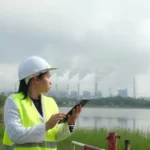Featured articles
-
Case studies of cities using geothermal energy successfully
April 28, 2024 -
The social impact of geothermal energy
April 28, 2024 -
Geothermal education and awareness-raising
April 28, 2024
While geothermal energy, drawing on the Earth’s natural heat, is a promising renewable energy source for meeting the environmental and climate challenges of the 21st century, financing geothermal projects remains a major challenge. The high initial capital cost of projects, the risks associated with geothermal exploration and exploitation, and the sometimes misguided perception of geothermal technologies can all slow down investment in this sector. Nevertheless, innovative solutions and structured approaches do exist to mobilize capital and stimulate the development of geothermal energy.
Understanding the challenges of financing geothermal projects
Financing challenges for geothermal projects include :
- High exploration and development costs: The exploration and development phases of geothermal projects can be expensive, involving deep drilling, feasibility studies and technical testing.
- Exploration risks: The underground nature of the geothermal resource inherent in exploration implies a certain level of uncertainty as to the quantity and quality of the resource available, which can deter investors.
- Perception of technological risks: Some misperceptions persist about geothermal technologies, sometimes associating them with seismic or environmental risks, which can affect investor appetite.
- Long payback period: Geothermal projects can have longer payback periods than other renewable energy sources, which may discourage some investors focused on short-term returns.
Exploring innovative financing solutions for geothermal energy
To overcome these financing challenges, several innovative solutions can be implemented:
- Public financing and public-private partnerships: Direct public investment or public-private partnerships can play a crucial role in supporting the initial exploration and development phases of geothermal projects, thereby reducing the risks for private investors.
- Investment funds dedicated to geothermal energy: The creation of investment funds dedicated to geothermal energy can attract capital specialized in this sector and help boost investor confidence.
- Guarantee and risk mitigation instruments: Guarantee instruments, such as insurance or public guarantees, can mitigate the financial risks associated with geothermal projects and encourage private investors to become involved.
- Results-based financing models: Pay-for-performance models or power purchase agreements can align investors’ interests with the success of the geothermal project, sharing risks and rewards.
- Crowdfunding and participatory financing: Crowdfunding and participatory financing platforms can help raise funds from a wide audience and raise awareness of geothermal energy.
Success stories in geothermal project financing
Several examples illustrate the success of innovative financing solutions for geothermal energy:
- The Hellisheidi geothermal project in Iceland: This project received initial funding from the Icelandic government, followed by private investment attracted by the project’s economic viability.
- Geothermal Infrastructure Facility: This dedicated geothermal fund raises capital from institutional investors and invests it in geothermal projects worldwide.
- The World Bank’s Geothermal Risk Mitigation Facility: This initiative offers guarantee instruments to reduce the financial risks associated with geothermal projects in developing countries.
Conclusion
Financing geothermal projects remains a challenge, but innovative solutions and structured approaches exist to mobilize capital and stimulate the development of this promising renewable energy source. By building on success stories and leveraging appropriate financial instruments, public and private players can play a crucial role in removing financial barriers and fostering a sustainable energy transition through geothermal energy.



